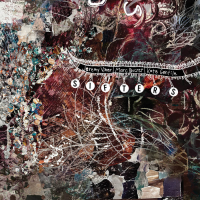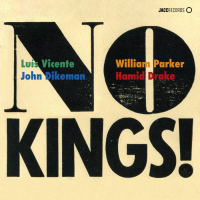Home » Jazz Articles » Album Review » Bossacucanova E Roberto Menescal: Bossa Got the Blues
Bossacucanova E Roberto Menescal: Bossa Got the Blues
Bossa Got The Blues maintains the preeminence of Bossacucanova—Alex Moreira on keyboards, Marcelinho Da Lua on scratches and samples, and Marcio Menescal on Fender and keyboard bass—among contemporary Brazilian bands whose sound springs from filtering traditional bossa nova through modern production and electronica. It also showcases one of the founding fathers of bossa nova guitar: guitarist, composer, and producer Roberto Menescal, who wrote the famous "O Barquinho (Little Boat)" and happens to be father of Bossacucanova bassist Marcio. (Father also joined son and crew for the band's 2001 global debut Brasilidade [Zuirigiboom/Six Degrees].)
Thanks to Papa Roberto, Bossa Got The Blues and some sweet, swinging Grant Green jazz guitar, too, all wrapped up in Bossacucanova's trademark luxurious 1960s production and presentation. Flavio Guimarães' harmonica leads "Laudir's Theme" out from a Brazilian jungle into an acoustic blues, his howls and wails pouring down on the guitar hook like sweet and sticky syrup. Leo Gandleman, whose saxophones have graced recordings by Gilberto Gil and other Brazilian stars for four decades, also climbs onboard to sing the blues.
These ten tracks would split and retrofit quite nicely into two sides of a vinyl LP, and Gandleman plays on the songs that would close side one (track five, "Blue Bossa") and two (track ten "Galeria Menescal"). "Blues Bossa" cribs the melody to "Don't Get Around Much Anymore" before opening up a dance floor jointly rocked by Menescal's electric guitar chords and Gandelman's moaning and groaning baritone and tenor saxophones. Gandelman adds tenor, baritone and flute in a lovely dance with acoustic guitar and vibraphone to "Galeria Menescal" (which opens, in case you missed all the old school, with the sound of a needle coming down on a vinyl album).
Yes, you could downshift and grind your Bossacucanova sportster into a deeper, harder and more powerful gear. But when you feel as good as the sound of Bossa Got the Blues!, why mess with simply perfect?
Track Listing
1937; Mandacaru; Train to Ipanema; Sambalaya; Blues Bossa; Laudir's Theme; Bossa Got The Blues; Klaunga Rocket; Vou Nessa; Galeria Menescal.
Personnel
BossaCucaNova
arrangerAlex Moreira
keyboardsMarcelinho Da Lua
producerMarcio Menescal
bassRoberto Menescal
guitarAdditional Instrumentation
Cris Delanno: vocals; Laudir DeOliveira: percussion; Renato Endrigo: percussion; Leo Gandelman: saxophones, flute, horn arrangements; Flávio Guimarães: harmonica; Carlos Malta: bass flute, piccolo; Jota Moraes: vibraphone; Ian Moreira: percussion; Sidinho Moreira: percussion; Rio Maracatu: percussion; Paulinho Trompete: flugelhorn, horn arrangements, trombone, trumpet.
Album information
Title: Bossa Got the Blues | Year Released: 2019 | Record Label: Six Degrees Records
Tags
PREVIOUS / NEXT
Support All About Jazz
 All About Jazz has been a pillar of jazz since 1995, championing it as an art form and, more importantly, supporting the musicians who make it. Our enduring commitment has made "AAJ" one of the most culturally important websites of its kind, read by hundreds of thousands of fans, musicians and industry figures every month.
All About Jazz has been a pillar of jazz since 1995, championing it as an art form and, more importantly, supporting the musicians who make it. Our enduring commitment has made "AAJ" one of the most culturally important websites of its kind, read by hundreds of thousands of fans, musicians and industry figures every month.




















